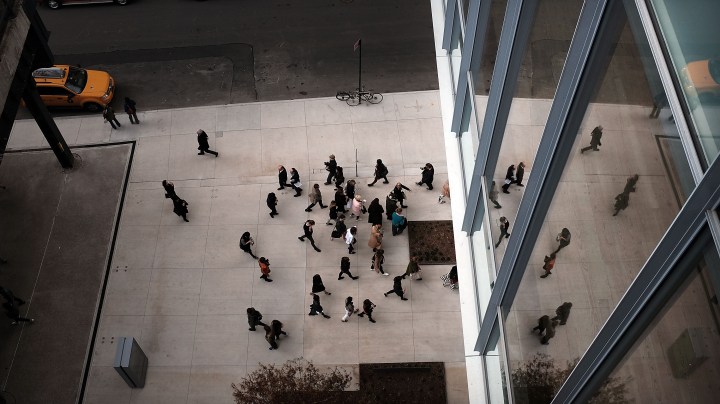Puerto Ricans Turn The Whitney’s Lobby Into a Dance Floor to Protest Island’s Colonial Status

People enter a courtyard at the relocated Whitney Museum of American Art in Manhattan's meatpacking district on April 23, 2015 in New York City. Photo by Spencer Platt/Getty Images
As Bad Bunny and El Alfa’s “La Romana” blared through the speakers in the lobby of the Whitney Museum of American Art, protesters held signs that read “tear gas is deadly,” “humanity has no borders,” and “who profits from tear gas?”
The protesters – who belong to several different grassroots group – were led by Decolonize This Place, which launched a nine-week protest calling for the removal of Warren B. Kanders, vice chairman of the Whitney board of directors. Kanders is the owner of Safariland, a company that produces tear gas and manufactures defense weapons. This weekend’s protest (the sixth installment of the nine-week series) took place just days ahead of May Day. On that same day in 2018, Puerto Rican protesters on the island ended up sustaining tear gas and pepper spray injuries when speaking out against the US Fiscal Control Board and austerity measures passed. Police used the tear gas and pepper spray to break up the mostly peaceful protests.
That’s why this weekends protest focused on Kanders and his role in the violence perpetrated against their community, but demonstrators also spoke out against Puerto Rico’s colonial status and the $72 billion debt. Members of Comité Boricua En La Diaspora helped coordinate the event, which made the museum’s lobby a dance floor.
“I come from a colonized land,” said one of the group’s members Andres Rodriguez in a speech, according to Hyperallergic. “I don’t have a nation. It was stripped away from me by force. As a Puerto Rican, I don’t have power over myself. I don’t have power of my land.”
As different songs played over speakers, there were some museum attendees who complained, explaining that they don’t expect to have to deal with this level of noise since they paid for admission. But as The Whitney, which has historically shut out people of color (both through its programming and admission fees), supports someone who has hurt their community, protesters simply responded to complaints by getting louder and making sure that anyone who visited the museum understood their message.
Below, check out the protesters dancing to “La Romana.”